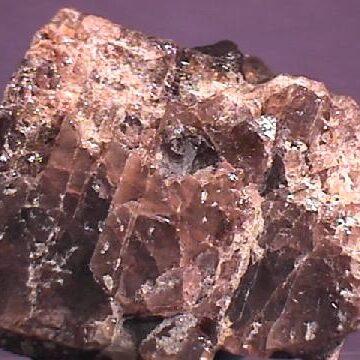ANDALUSITE
Discovered in Andalusia (Spain), the andalusite stone is relatively rare, with big crystals over 10 ct. especially rare. Due to its remarkable pleochroism effect, the stone is highly valued by collectors.
Notable varieties
Chiastolite: An opaque variety that features a dark, cross-shaped pattern when viewed in cross-section, formed by carbonaceous inclusions.
Virgin Stone: This is the name for the type of andalusite that contains the Chiastolite pattern.
USES
Industrial and technical uses
Refractories: Its resistance to heat, thermal shock, and mechanical stress makes it ideal for lining industrial furnaces, kilns, incinerators, and other equipment used in high-temperature processes.
High-temperature ceramics: Andalusite is a key component in making high-quality ceramics and porcelain, especially those used in spark plugs and other electrical insulation components.
Foundry and steel casting: It is used to produce molds and cores for casting steel and iron.
Aerospace: Andalusite is used in thermal protection systems for supersonic aircraft and spacecraft engines.
Jewelry and ornamental uses
Gemstones: Transparent andalusite is cut into gemstones for jewelry like rings, pendants, and earrings. It is valued for its pleochroism, meaning it displays different colors (such as green, brown, red, and yellow) depending on the viewing angle.
Historical talismans: The chiastolite variety, which has a visible black cross pattern when polished, has been used for centuries as an amulet or charm to provide protection and security.
MOHS HARDNESS
6.5 – 7.5
LUSTER
Vitreous Color: Brown, red-brown, green, or colorless
CHEMICAL COMPOUND
Andalusite is a metamorphic mineral with the chemical formula \(Al_{2}SiO_{5}\)
WHERE TO FIND
It is found worldwide in phyllites, schists and gneisses and associated quartz veins. It indicates relatively low pressure metamorphism of aluminum-rich rocks, such as shales.
It is found in various metamorphic rocks worldwide, with significant commercial deposits in South Africa, the United States (especially California), Brazil, and France.
DIAGNOSTIC PROPERTIES
Andalusite is identified through several diagnostic characteristics, including its strong pleochroism (displaying different colors like green, red, and orange simultaneously), a distinctive kiastolite cross (seen in some varieties under cross-polarized light).
